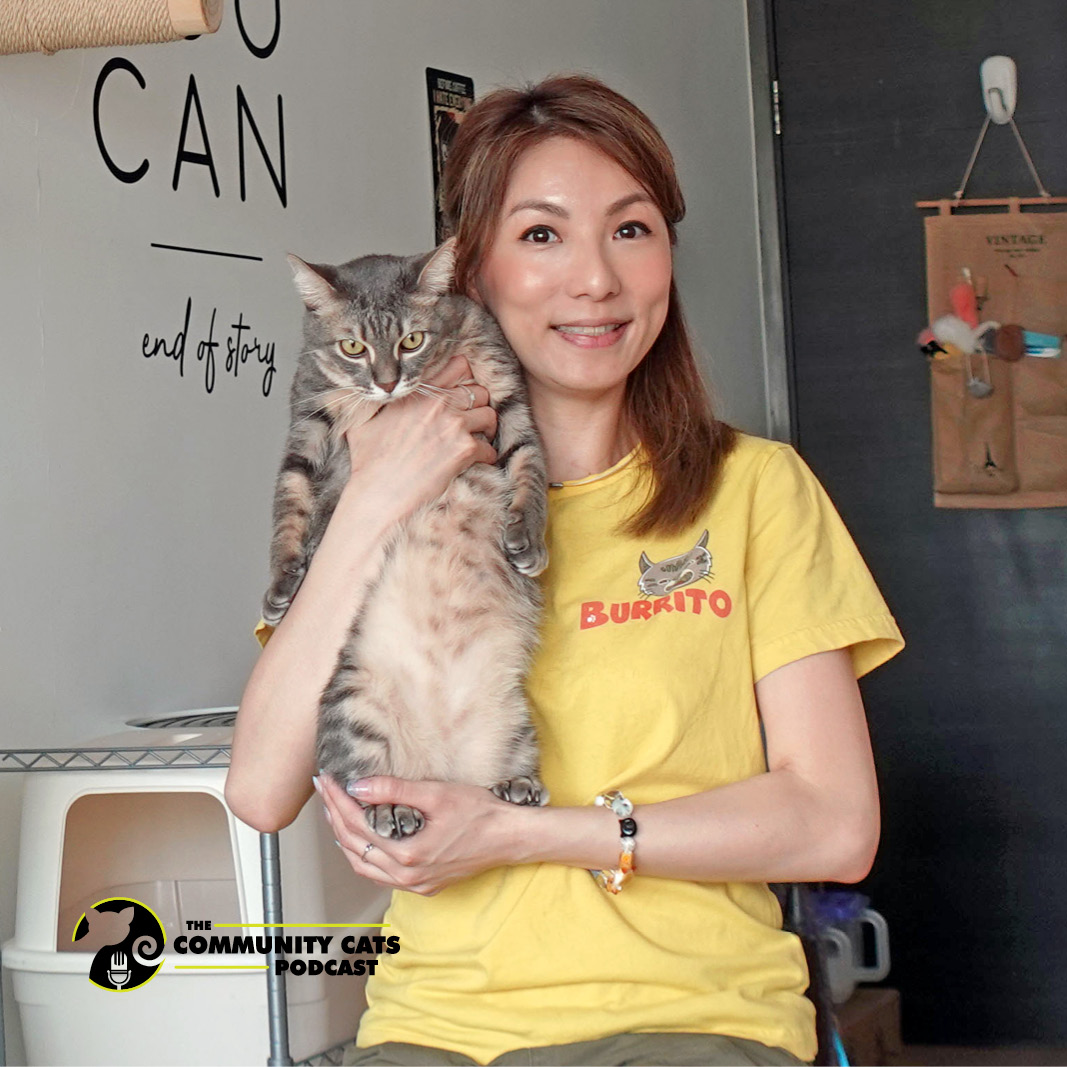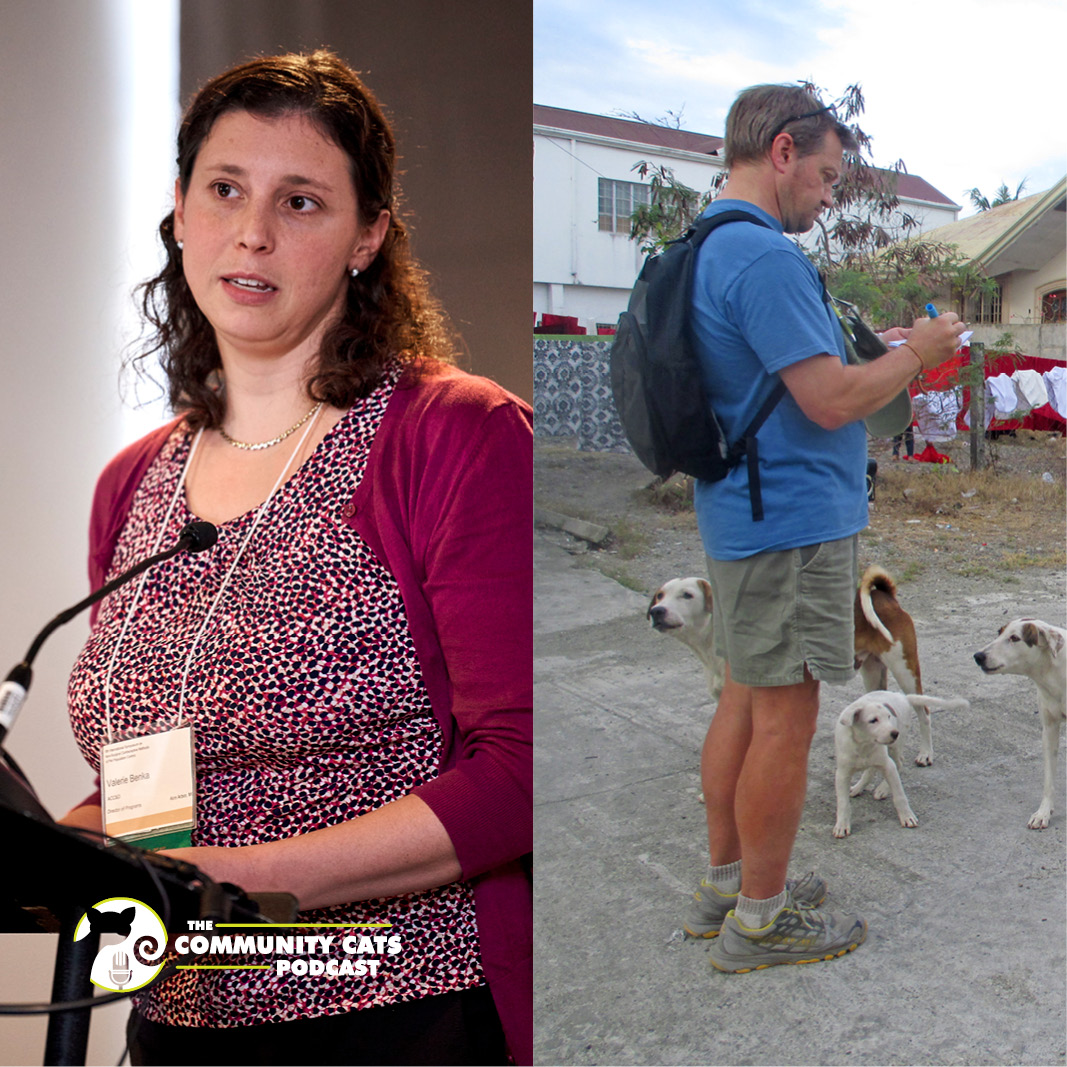
Thinking Vertically with Melody Kwan of MeloCat
October 4, 2022
Contraception for Cats with Valerie Benka and John Boone from Alliance for Contraception in Cats and Dogs
October 11, 2022
Contributed by Caitlin Quinn, Director of Operations at HeARTs Speak
Has anyone outside of the field of animal welfare ever said to you, “I could never do what you do, I care about animals too much.” That sentiment seems to reflect the frequent assumption that our work is primarily about witnessing suffering, and those who say it are often expressing a need to emotionally protect or distance themselves. Unfortunately, it could be that they got that idea through the stories they’ve heard directly from us.
Traditionally, the stories that people hear about animals seem to be dominated by a simple formula: “This animal was suffering, we helped save them, and you can be a hero by helping us continue to make this impact.” These stories are emotional and memorable, and on the surface, there’s nothing at all wrong with that. We’re often taking nuanced situations and distilling them into their most easily understood parts, trying to ensure that members of the public understand the urgency of a situation or the needs we’re seeing in the community. But there can be unintended consequences of stories that focus only on a call to action without considering the bigger picture.

Ethical storytelling is a movement that honors the inherent responsibility to be respectful and thoughtful not just of individual stories but of how those stories are gathered and shared. It begs us to measure the impact of messages beyond just the monetary return on investment, and honor our duty to bring awareness to our work with thoughtful accuracy. It urges us to frame our messages in a way that looks beyond a simple transactional moment and considers how our community will see our work in the future. And it reminds us that our deeper responsibilities are to our clients, the animals, and our missions.
But how can we tell stories that move beyond a one-dimensional portrayal of the people and animals we serve? Using the foundations of ethical storytelling, we can begin to consider the “double bottom line” of the stories we tell; lifting up not just the individual campaign or animal, but also ensuring that we’re serving our big-picture missions and goals in the process —and mitigating unintended consequences.
Here are some tips for incorporating ethical storytelling into your work:
- Asses each story:
- Who is the story about?
- Does it reinforce any negative stereotypes or myths about animals, community members, or our programs?
- Does it serve both client/animal and the organization equally?
- Look at individual stories as opportunities to offer an authentic connection to your mission, limit opportunities for undeserved criticism, and deliver the baseline message that your organization cares for both pets and people.
- Look critically at stories where hardship is emphasized and almost exploited – especially those that are oversimplified or leverage guilt to drive action. Solicit input on storytelling from the community you serve and staff or volunteers whose voices are often not heard.
- Rather than emphasizing the organization, prioritize stories that focus on connection, hope, and partnerships. Look for stories that celebrate growth, and that may not be the most obvious but do have the potential to be more resonant.
- Celebrate small. Oversimplified stories can lead to mismatched expectations — from clients, funders, even staff and volunteers. It can also lead to a feeling of inauthenticity for those closest to the work. But incremental successes can feel relatable and exciting to get behind.
- Realize that many audiences are looking for more reasons for hope, joy, and connection. If you’re afraid to step outside the box, start small by reframing traditional stories using a new perspective. Talk about tough things by emphasizing resilience and progress
- When collecting stories from clients or community partners, exercise radical consent and empathy. Ask yourself: “Would I want my own story told this way?”
- Use photos and videos to tell your stories more effectively. Banish images that reinforce white saviorism or an imbalance of power in community-based programs. Include human connection where possible, prioritize authenticity.
- Make your language community-driven. Move away from using jargon, build a shared language (one that centers audience understanding above organizational expertise), and translate materials where possible.
As social media asks us to continually reimagine how we tell stories, as we move to engage younger supporters, as the competition for our followers’ attention increases, ethical storytelling provides us with a path forward. By leveraging authenticity and mutual respect, we may just find more supporters willing to take us by the hand as partners rather than tell us they couldn’t imagine doing this work.
About Caitlin Quinn’
 Caitlin is passionate about working with shelters and rescues to reimagine the way they tell their stories and connect with new audiences. She has served in the animal welfare field since 2008 and early on had the honor of working closely with diverse organizations across the U.S. to maximize resources, redesign policies, & find life-changing marketing solutions. In 2015 she got her MPA with a concentration in nonprofit management and in 2021 she began teaching shelter marketing for the University of Florida Master’s in Shelter Medicine program. She currently shares her life with a petite brindle pit bull named Sally.
Caitlin is passionate about working with shelters and rescues to reimagine the way they tell their stories and connect with new audiences. She has served in the animal welfare field since 2008 and early on had the honor of working closely with diverse organizations across the U.S. to maximize resources, redesign policies, & find life-changing marketing solutions. In 2015 she got her MPA with a concentration in nonprofit management and in 2021 she began teaching shelter marketing for the University of Florida Master’s in Shelter Medicine program. She currently shares her life with a petite brindle pit bull named Sally.




